-
Top Professional Products



-
Professional Articles
- Caries
- Dry Mouth
- Enamel Erosion
- Gum Issues
- Orthodontics
- Pediatric
- Sensitivity
- Whitening
- Social Responsibility
- Career Development
Try the new Colgate dental stuDENT app today

-
Gum Health Physical Tool
Assess your patients' gum health in your office using this tool and send them home with a personalized report.

-
Oral Health Commitment
- Oral Health Commitment
- Bright Smiles, Bright Futures
- Educational Resources
- Mobile Dental Van
- Volunteer
Colgate Prevident
Colgate® PreviDent® Gel (1.1% Sodium Fluoride), Very Berry






Colgate Prevident
Colgate® PreviDent® Gel (1.1% Sodium Fluoride), Very Berry
Benefits
Colgate® PreviDent® Gel is a Self-topical neutral fluoride gel containing 1.1% sodium fluoride for use as a dental caries preventive in pediatric patients and adults who require extra-strength fluoride protection. An ideal home therapy that comes in a squeeze-tube and is easily applied onto a toothbrush as well as a mouthpiece tray. PreviDent® Gel is an effective second fluoride treatment as part of a 2-step regimen after brushing with fluoride toothpaste. Comes in both Fresh Mint & Very Berry Flavors.
Characteristics
- Arrests 91% of early root caries
- Neutral pH
- Great taste and two different flavors
1. De Paola, P., Soparkar, P. monograph on the Proceedings of Conference on Cariology for the Nineties, University of Rochester, 1991
- Proven clinically effective
- Safe for crown and composite restorations
- Patient compliance
- Highest concentration of fluoride available for home use
1. De Paola, P., Soparkar, P. monograph on the Proceedings of Conference on Cardiology for the Nineties, University of Rochester, 1991.
Download Full Prescribing Information:
PRESCRIBING INFORMATION
A dental caries preventive, for once daily self-applied topical use. It is well established that 1.1% sodium fluoride is safe and extraordinarily effective as a caries preventive when applied frequently with mouthpiece applicators.1-4 PreviDent® Gel in a squeeze-tube is easily applied onto a toothbrush as well as a mouthpiece tray. This prescription dental gel should be used once daily following use of a regular toothpaste unless otherwise instructed by your dental professional.
Indications:
A dental caries preventive.
Contraindications: Do not use in pediatric patients under age 6 years unless recommended by a dentist or physician.
Warnings: Prolonged daily ingestion may result in various degrees of dental fluorosis in pediatric patients under age 6 years, especially if the water fluoridation exceeds 0.6 ppm. Use in pediatric patients under age 6 years requires special supervision to prevent repeated swallowing of gel. Read directions carefully before using. Keep out of reach of infants and children.
Precautions: General: Not for systemic treatment. DO NOT SWALLOW.
Carcinogenesis, Mutagenesis, Impairment of Fertility: In a study conducted in rodents, no carcinogenesis was found in male and female mice and female rats treated with fluoride at dose levels ranging from 4.1 to 9.1 mg/kg of body weight. Equivocal evidence of carcinogenesis was reported in male rats treated with 2.5 and 4.1 mg/kg of body weight. In a second study, no carcinogenesis was observed in rats, males or females, treated with fluoride up to 11.3 mg/kg of body weight. Epidemiological data provide no credible evidence for an association between fluoride, either naturally occurring or added to drinking water, and risk of human cancer.
Fluoride ion is not mutagenic in standard bacterial systems. It has been shown that fluoride ion has potential to induce chromosome aberrations in cultured human and rodent cells at doses much higher than those to which humans are exposed. In vivo data are conflicting. Some studies report chromosome damage in rodents, while other studies using similar protocols report negative results.
Potential adverse reproductive effects of fluoride exposure in humans has not been adequately evaluated. Adverse effects on reproduction were reported for rats, mice, fox, and cattle exposed to 100 ppm or greater concentrations of fluoride in their diet or drinking water. Other studies conducted in rats demonstrated that lower concentrations of fluoride (5 mg/kg of body weight) did not result in impaired fertility and reproductive capabilities.
Pregnancy: It has been shown that fluoride crosses the placenta of rats, but only 0.01% of the amount administered is incorporated in fetal tissue. Animal studies (rats, mice, rabbits) have shown that fluoride is not a teratogen. Maternal exposure to 12.2 mg fluoride/kg of body weight (rats) or 13.1 mg/kg of body weight (rabbits) did not affect the litter size or fetal weight and did not increase the frequency of skeletal or visceral malformations. There are no adequate and well-controlled studies in pregnant women. However, epidemiological studies conducted in areas with high levels of naturally fluoridated water showed no increase in birth defects. Heavy exposure to fluoride during in utero development may result in skeletal fluorosis, which becomes evident in childhood.
Nursing Mothers: It is not known if fluoride is excreted in human milk. However, many drugs are excreted in milk, and caution should be exercised when products containing fluoride are administered to a nursing woman. Reduced milk production was reported in farm-raised fox when the animals were fed a diet containing a high concentration of fluoride (98-137 mg/kg of body weight). No adverse effects on parturition, lactation, or offspring were seen in rats administered fluoride up to 5 mg/kg of body weight.
Pediatric Use: The use of PreviDent Brush-On Gel in pediatric age groups 6 to 16 years as a caries preventive is supported by pioneering clinical studies with 1.1% sodium fluoride gels in mouth trays in students age 11 to 14 years conducted by Englander et al. 2-4 Safety and effectiveness in pediatric patients below the age of 6 years have not been established. Please refer to the CONTRAINDICATIONS and WARNINGS sections.
Adverse Reactions: Allergic reactions and other idiosyncrasies have been rarely reported.
Overdosage: Accidental ingestion of large amounts of fluoride may result in acute burning in the mouth and sore tongue. Nausea, vomiting, and diarrhea may occur soon after ingestion (within 30 minutes) and are accompanied by salivation, hematemesis, and epigastric cramping abdominal pain. These symptoms may persist for 24 hours. If less than 5 mg fluoride/kg body weight (i.e., less than 2.3 mg fluoride/lb body weight) have been ingested, give calcium (e.g., milk) orally to relieve gastrointestinal symptoms and observe for a few hours. If more than 5 mg fluoride/kg body weight (i.e., more than 2.3 mg fluoride/lb body weight) have been ingested, induce vomiting, give orally soluble calcium (e.g., milk, 5% calcium gluconate or calcium lactate solution) and immediately seek medical assistance. For accidental ingestion of more than 15 mg fluoride/kg of body weight (i.e., more than 6.9 mg fluoride/lb body weight), induce vomiting and admit immediately to a hospital facility.
A treatment dose (a thin ribbon) of PreviDent® Brush-On Gel contains 2 mg fluoride. A 0.8 oz. tube contains 104 mg fluoride. A 2 oz. tube contains 266 mg fluoride.
Dosage and Administration: Follow these instructions unless otherwise instructed by your dental professional:
After brushing thoroughly with toothpaste, rinse as usual. Adults and pediatric patients 6 years of age or older, apply a thin ribbon of gel to the teeth with a toothbrush or mouth trays once daily for at least one minute, preferably at bedtime. After use, adults expectorate gel. For best results, do not eat, drink or rinse for 30 minutes. Pediatric patients, age 6-16, expectorate gel after use and rinse mouth thoroughly.
Storage: Store at controlled room temperature, 20-25°C (68-77°F)
Sources:
- PF DePaola, Cariology for the Nineties. Caries in our aging population: What are we learning? University of Rochester Press, Ed. WH Bowen and LW Tabak. 26-35 (1993).
- DePaola PF, In: Bower WH,Tabak LA, eds Cariology in the nineties: Caries in Our Aging Population, What are we Learning? University of Rochester Press:1993:26-35.
- Dreizen S, Brown LR, Daly TE, Drane JB. Prevention of xerostomia-related dental caries in irradiated cancer patients. J Dent Res. 1997;56:99-104. JR Mellberg, A Charig, M Deutchman, W O`Brien and A Lass, Effect of two fluoride gels on fluoride uptake and phosphorous loss during artificial caries formation, J Dent Res, 65(8): 1084-1096, August 1986
- LB Toolson and DE Smith, A 2-year longitudinal study of overdenture patients. Part 1: Incidence and control of caries on overdenture abutments. J Prosthet Dent, 40, 486-491.
IMPORTANT SAFETY INFORMATION: Do not swallow. Keep out of reach of children. Acute burning in the mouth and sore tongue may be experienced by some individuals. If accidental ingestion occurs, side effects may include nausea, vomiting, diarrhea, and abdominal pain. See Package Insert for additional safety information.
Related Products
Prescription Products

Colgate® PreviDent® 5000 Sensitive Protection is a low abrasion, prescription strength toothpaste for sensitive teeth and Prevents Cavities. Ask your dentist!
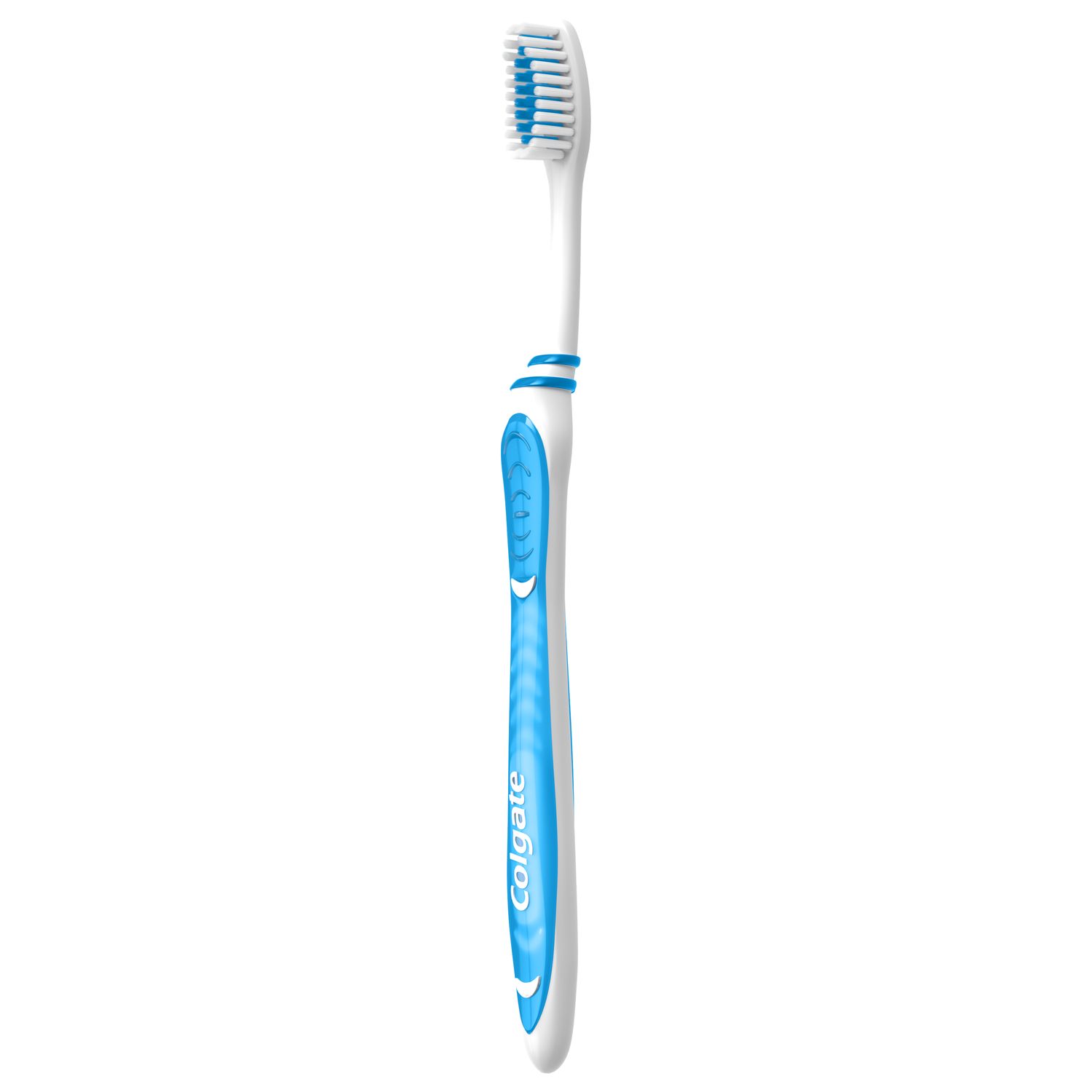
The Colgate® Wave Gum Comfort Toothbrush is designed for patients with sensitive gums who experience gum pain while brushing.
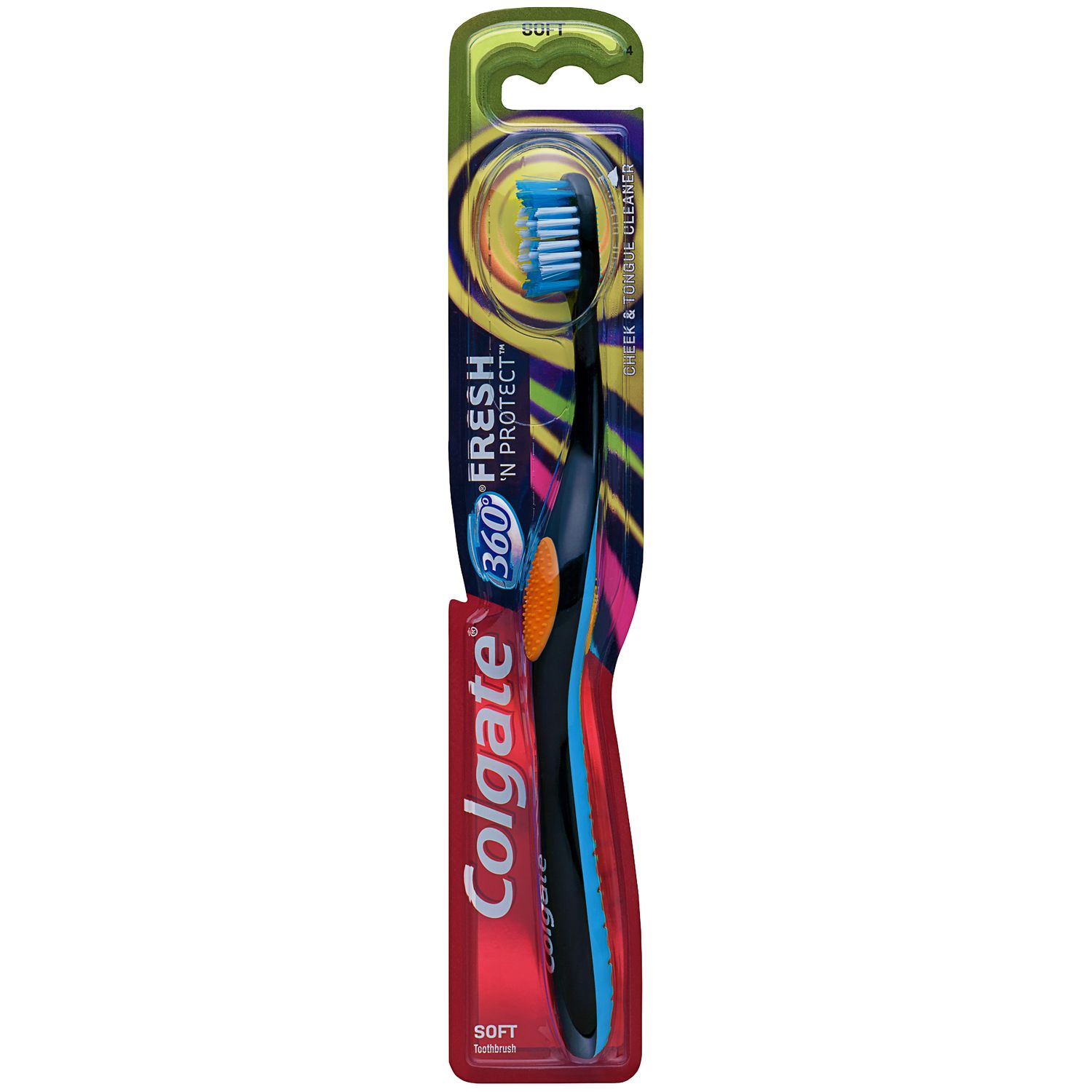
Colgate® 360°® Fresh 'N Protect manual toothbrush is perfect for older kids with changing teeth, and is designed with a cool cheek and tongue cleaner that helps remove more plaque and stains than an ordinary toothbrush.
Prescription Products
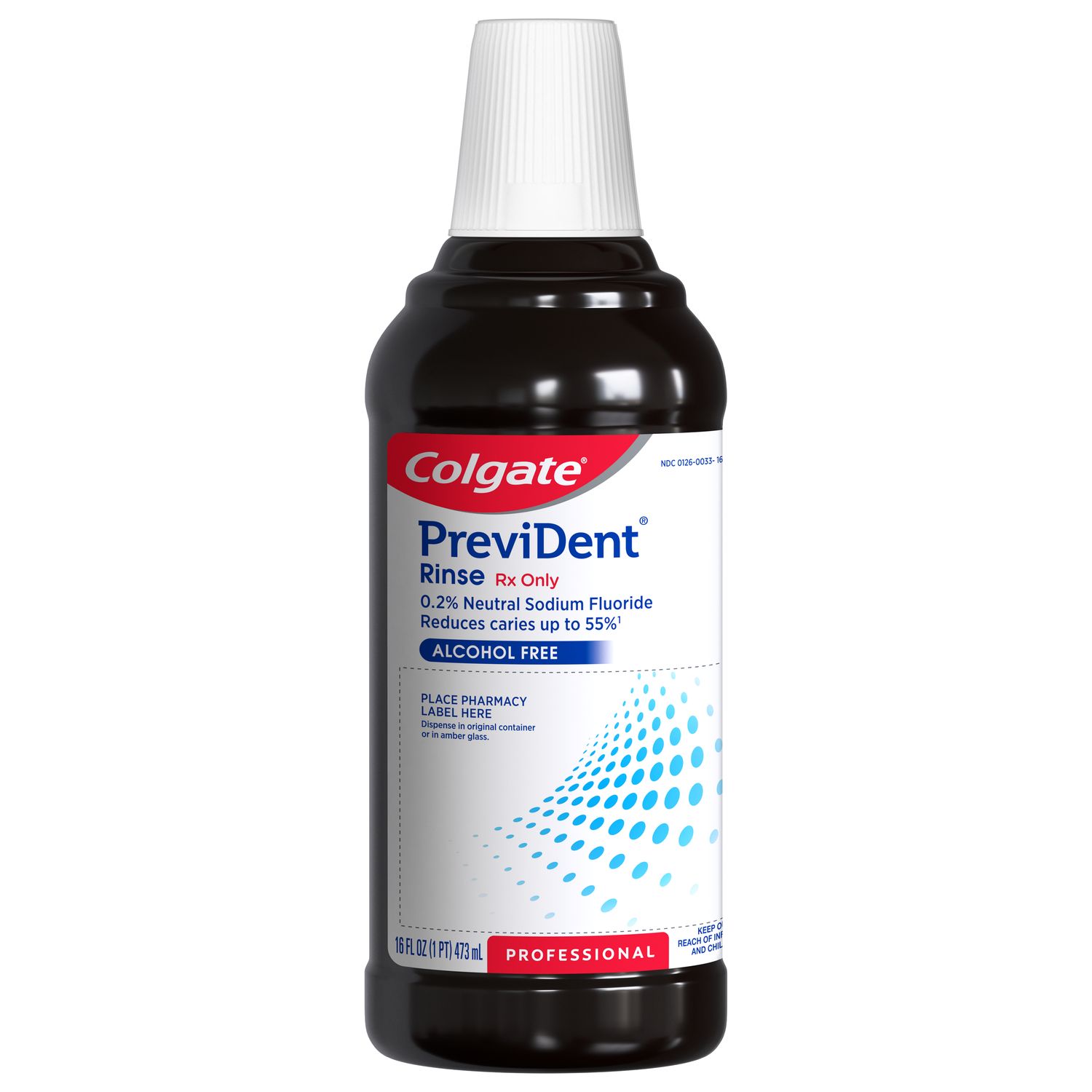
Colgate® PreviDent® Oral Rinse is prescription-strength, with extra fluoride to help decrease cavities for people who have trouble brushing.
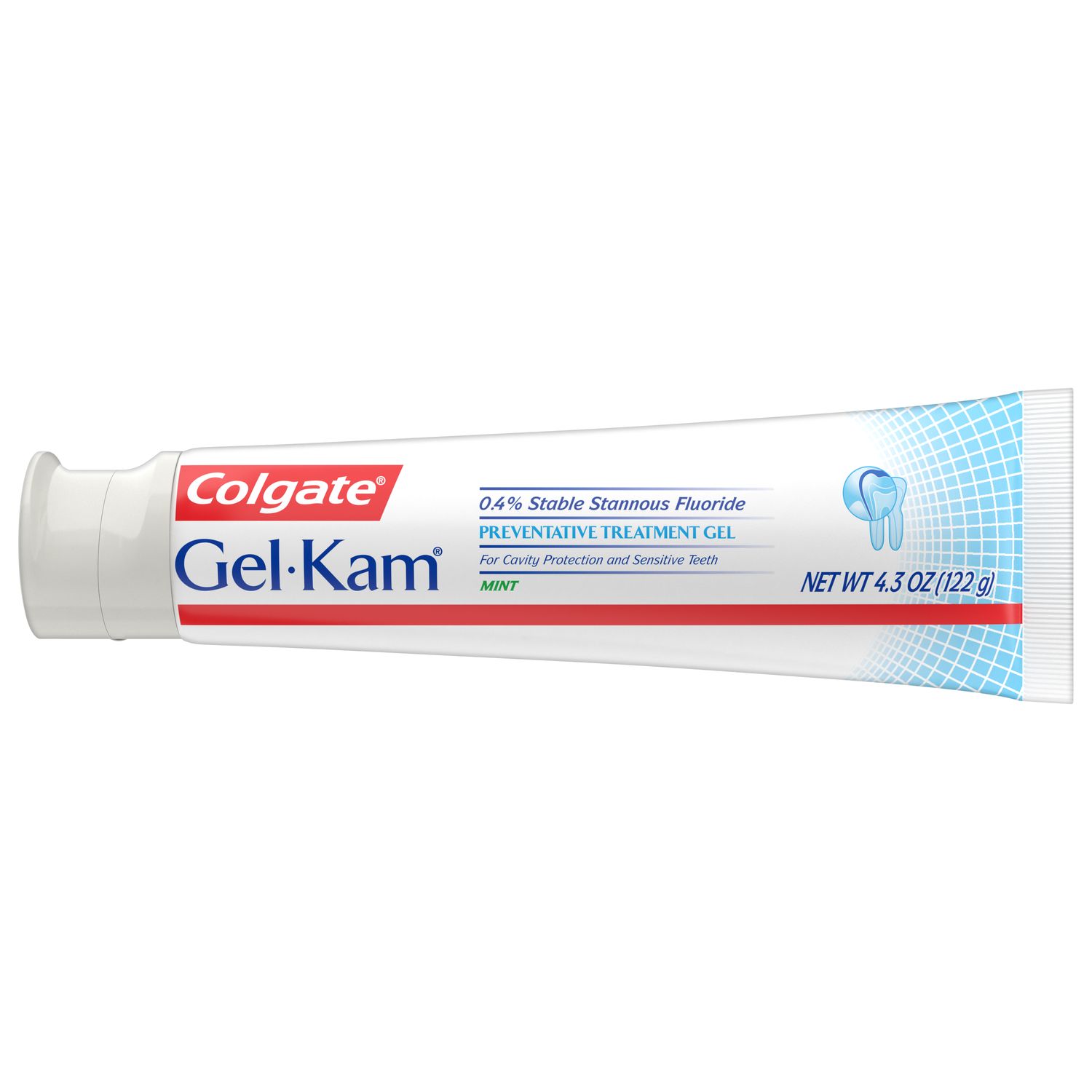
Colgate® Gel-Kam Preventative Treatment Gel prevents cavities and treats sensitive teeth with a clinically proven fluoride formula. Try it today!
Prescription Products
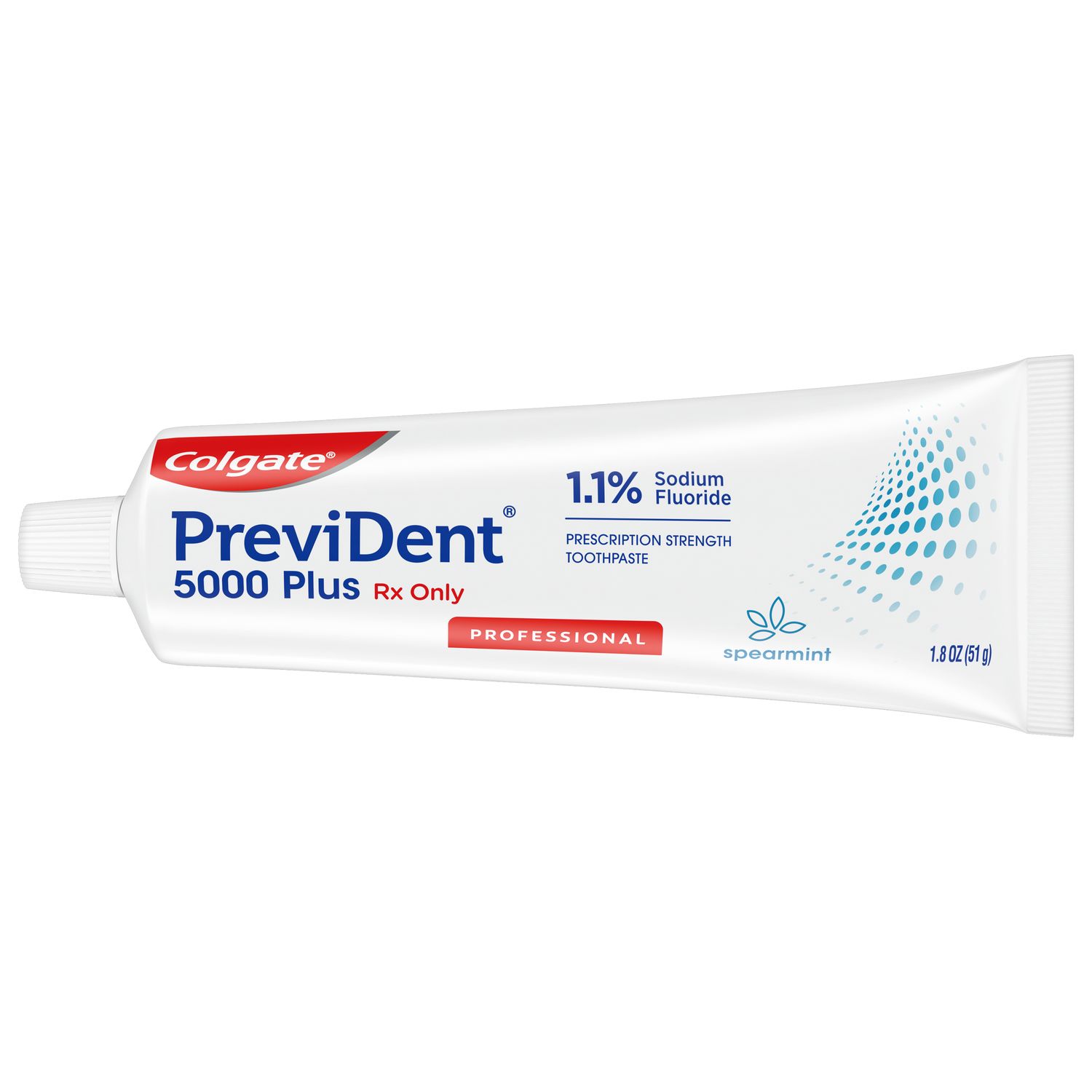
Colgate® PreviDent® 5000 Plus Prescription Toothpaste delivers 4x the fluoride than over-the-counter toothpastes & rinses. Contact your your dentist today!
Prescription Products

Help pepare children's smiles for the future. Colgate® PreviDent® 5000 Kids Prescription Toothpaste is a prescription strength fluoride toothpaste trusted by dental professionals. Contact your dentist today!

Safe, great-tasting and easy to use, Phos-Flur® Rinse is specially formulated for orthodontic patients and provides clinically proven fluoride protection.

Provide the Ultimate Protection for Patients
Whether patients are in the office or at home, Colgate PreviDent® prescription fluoride products provide the maximum cavity protection they need.

Gum Health Physical Tool
Assess your patients' gum health in your office using this tool and send them home with a personalized report.


